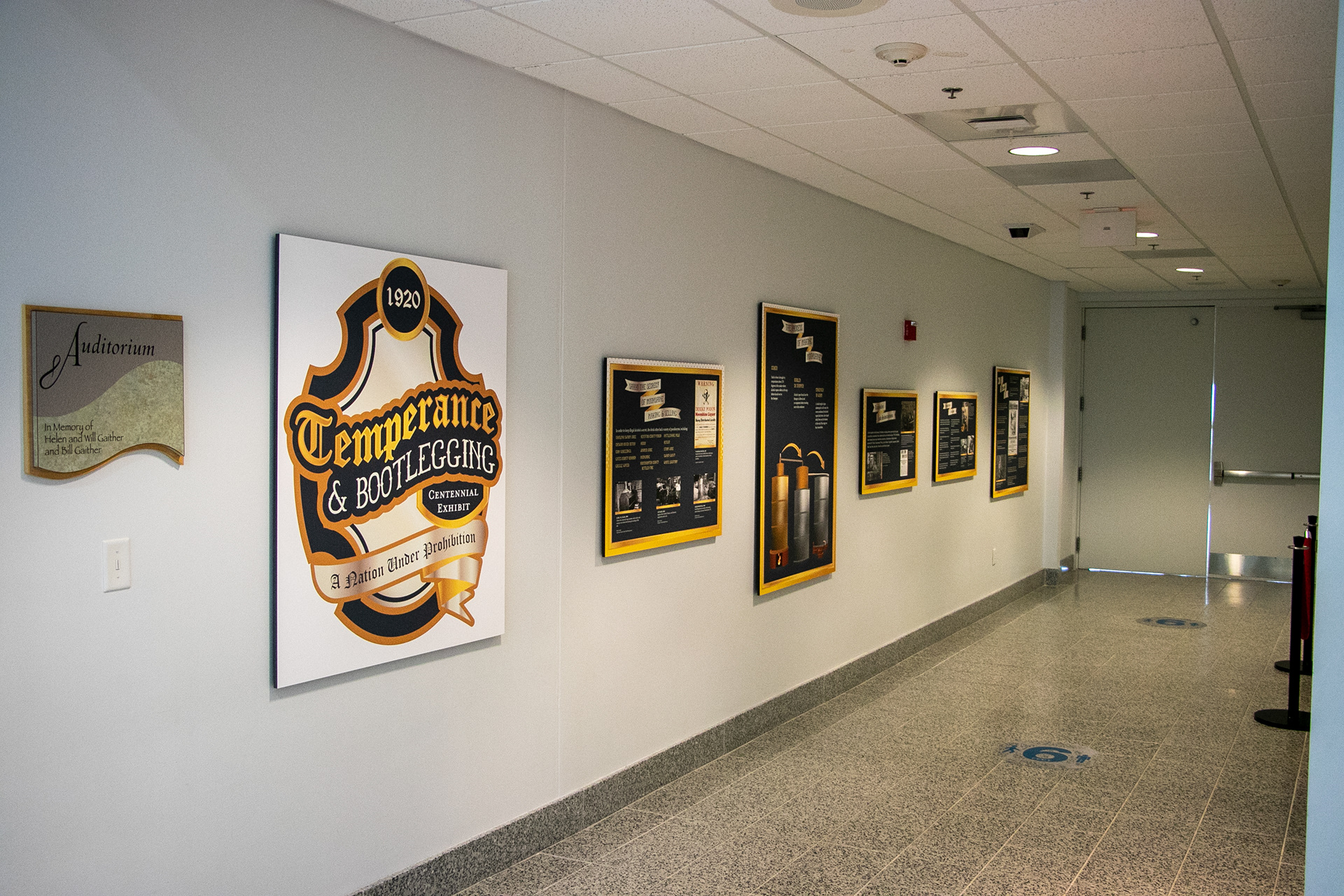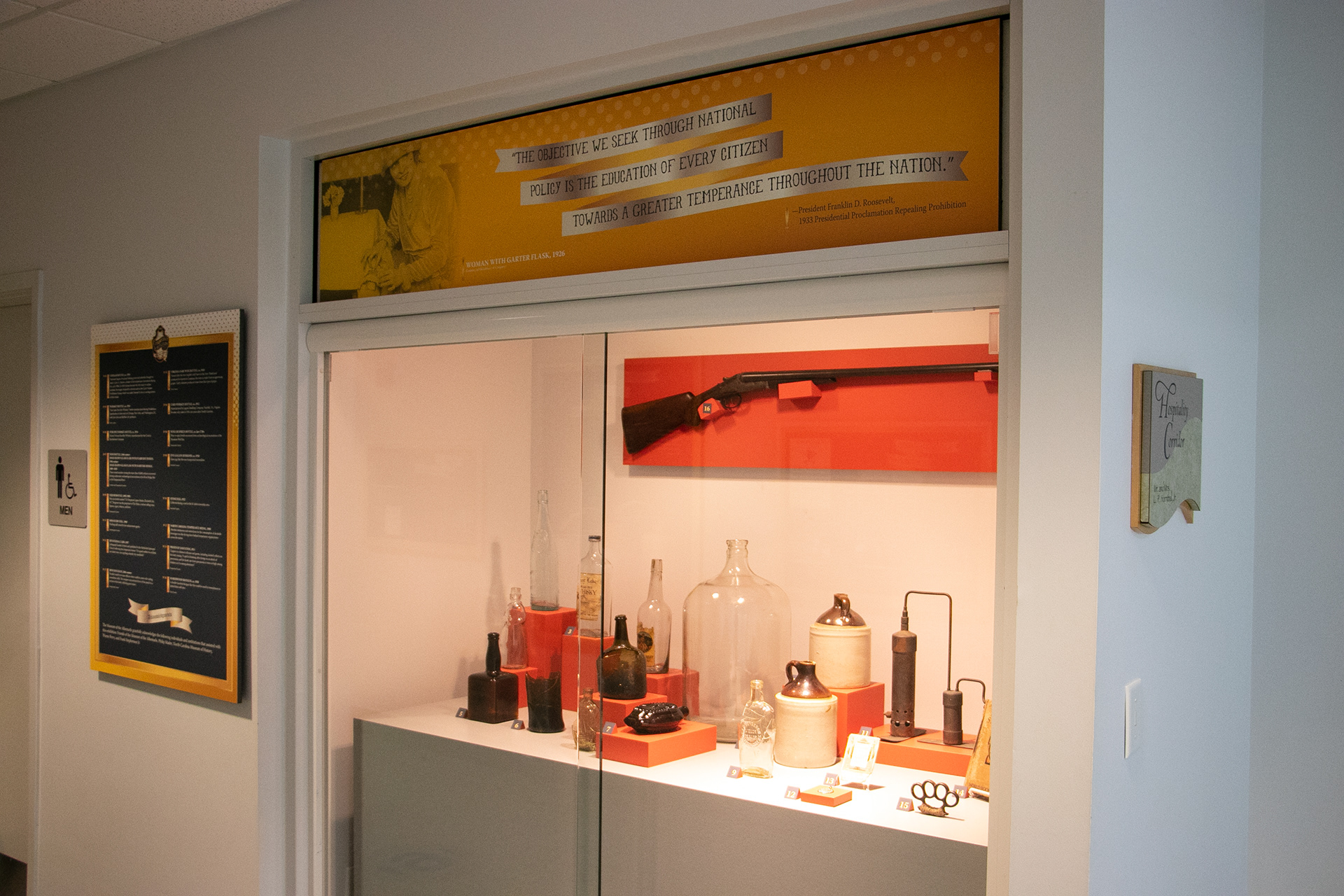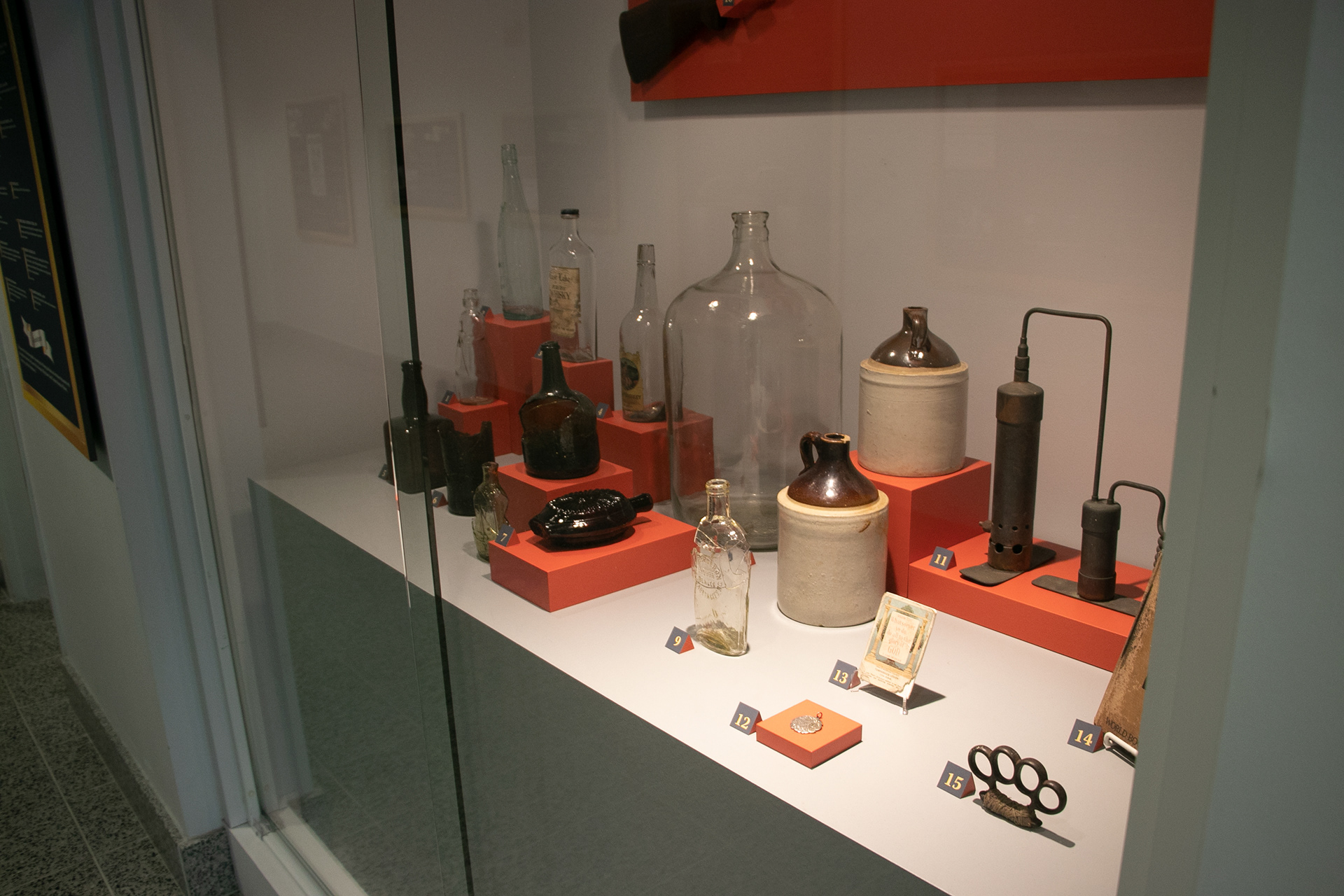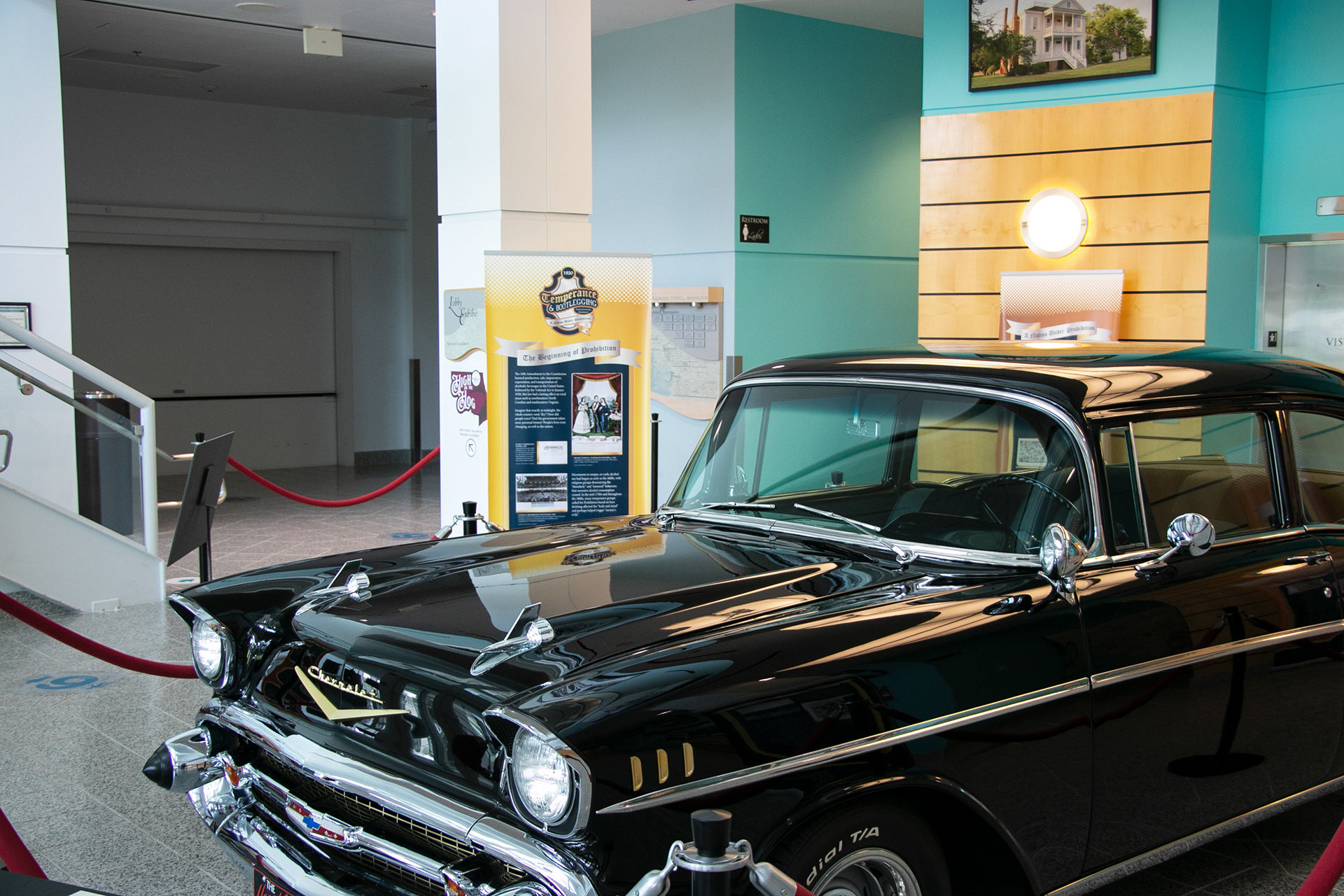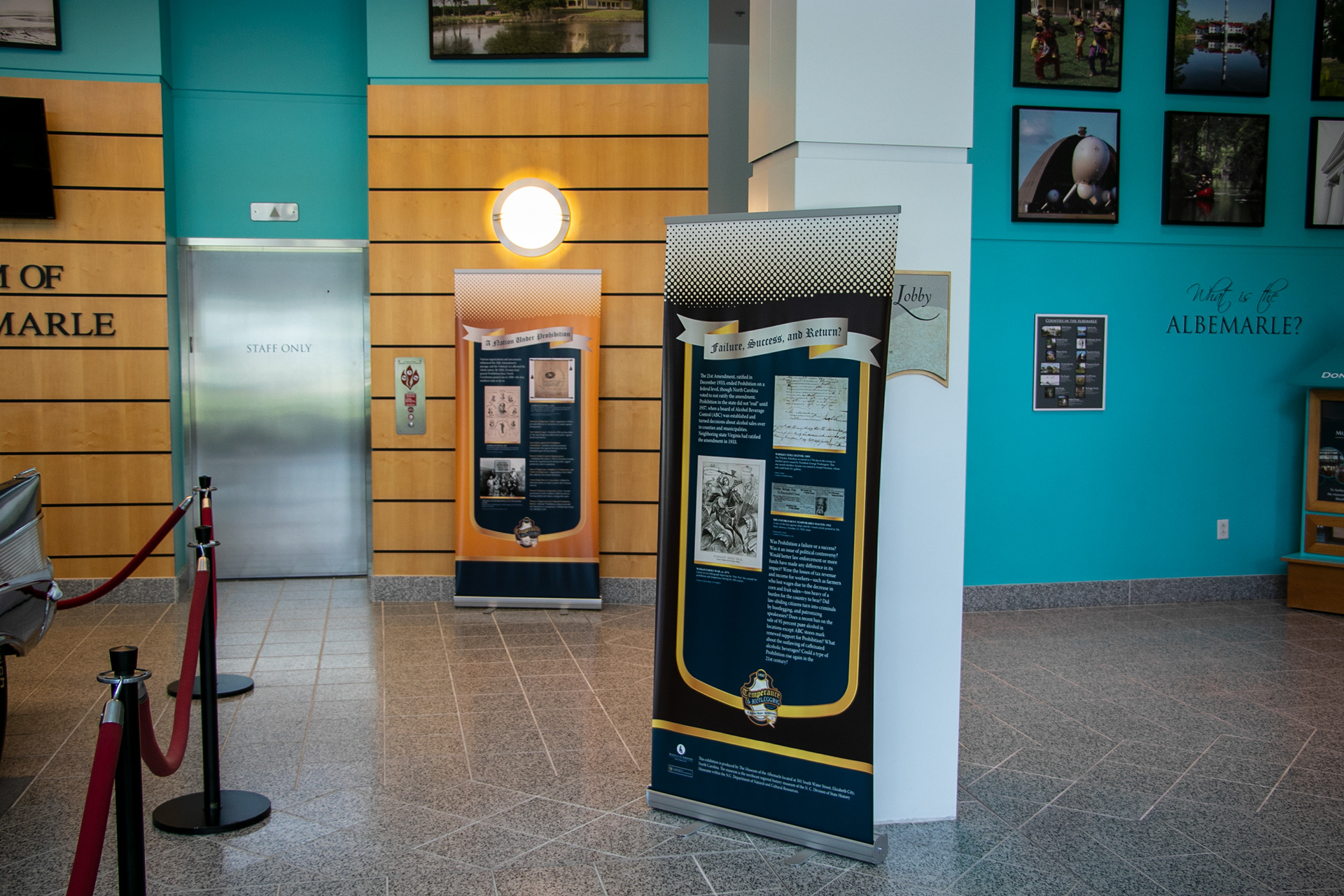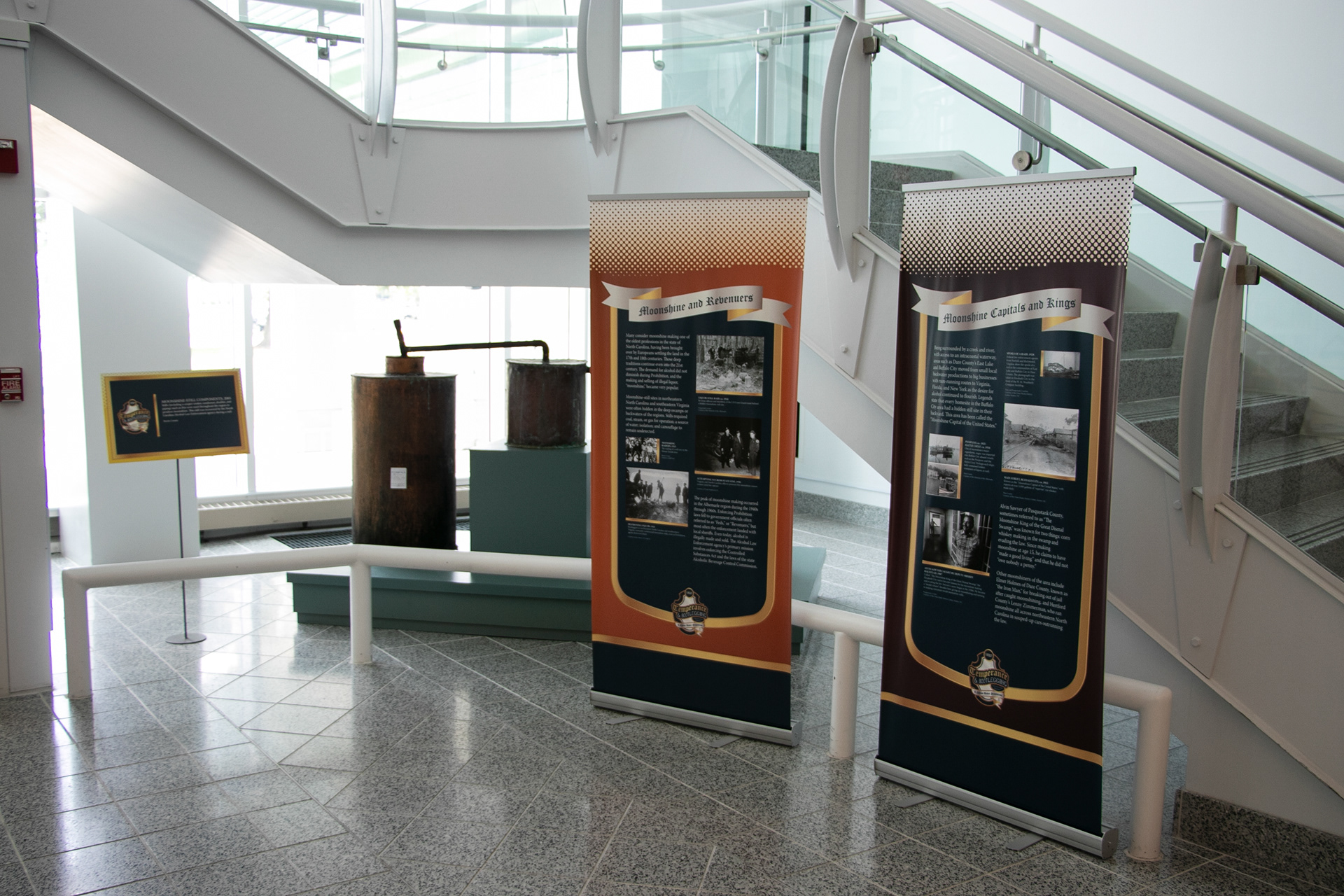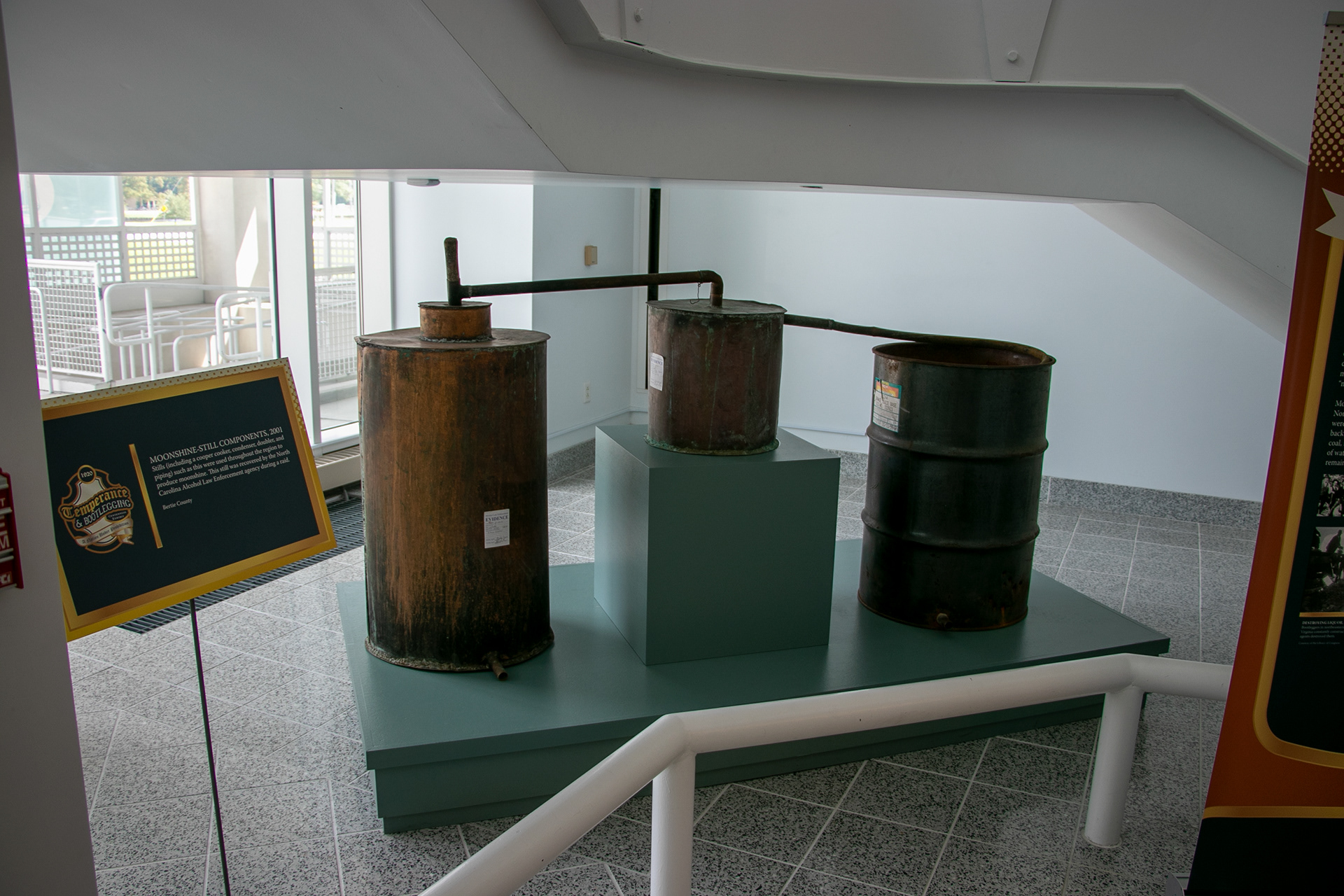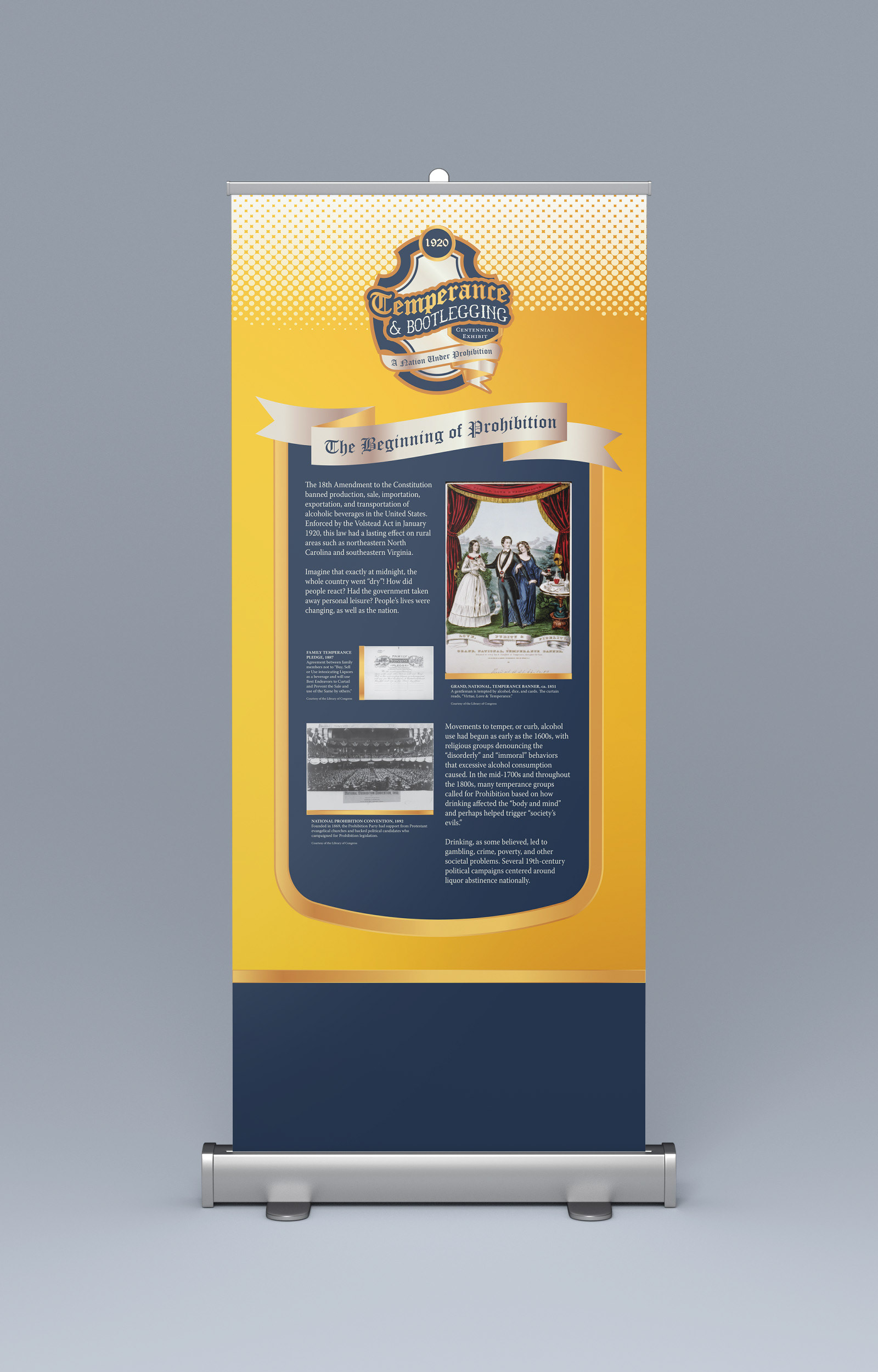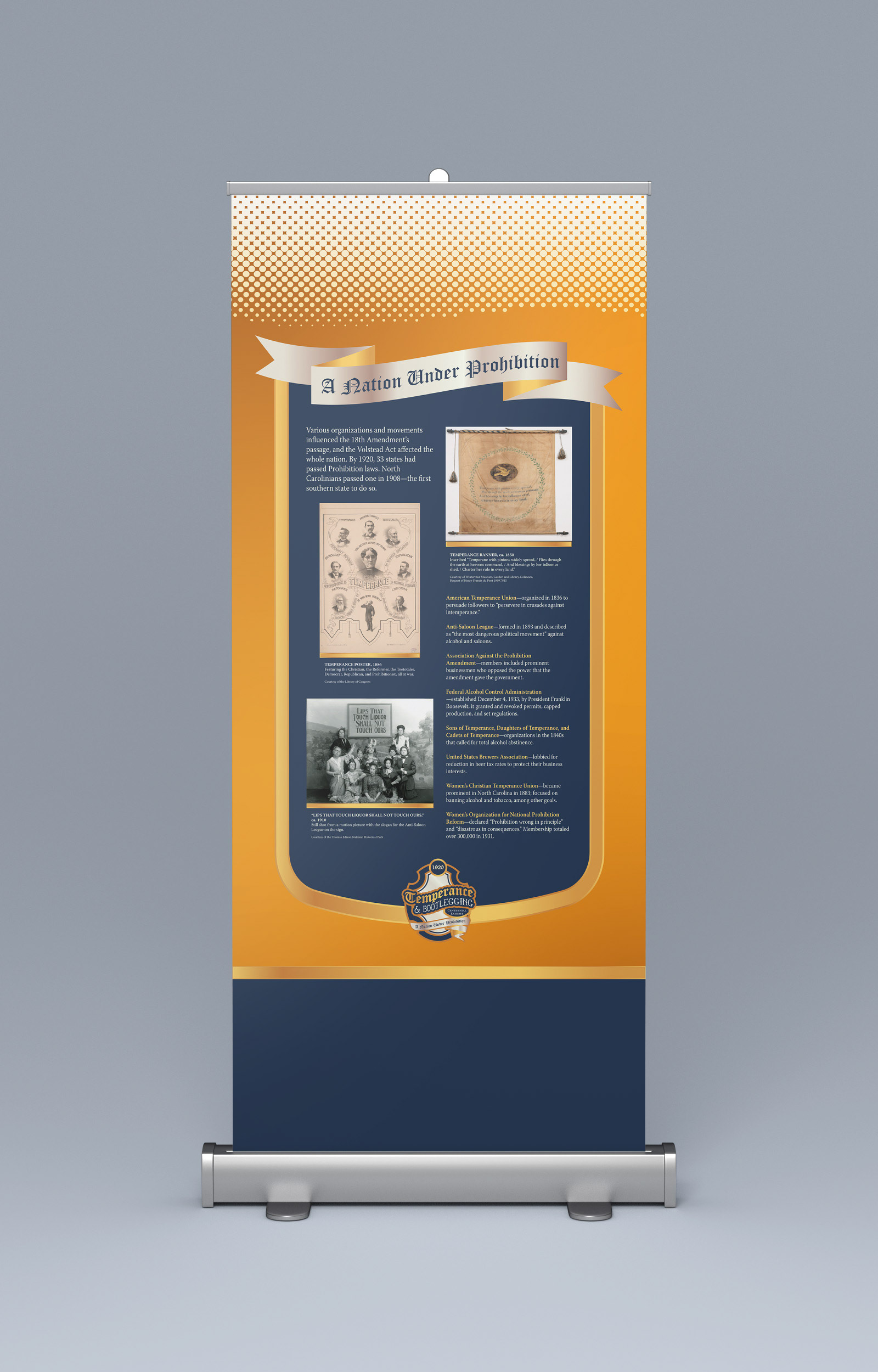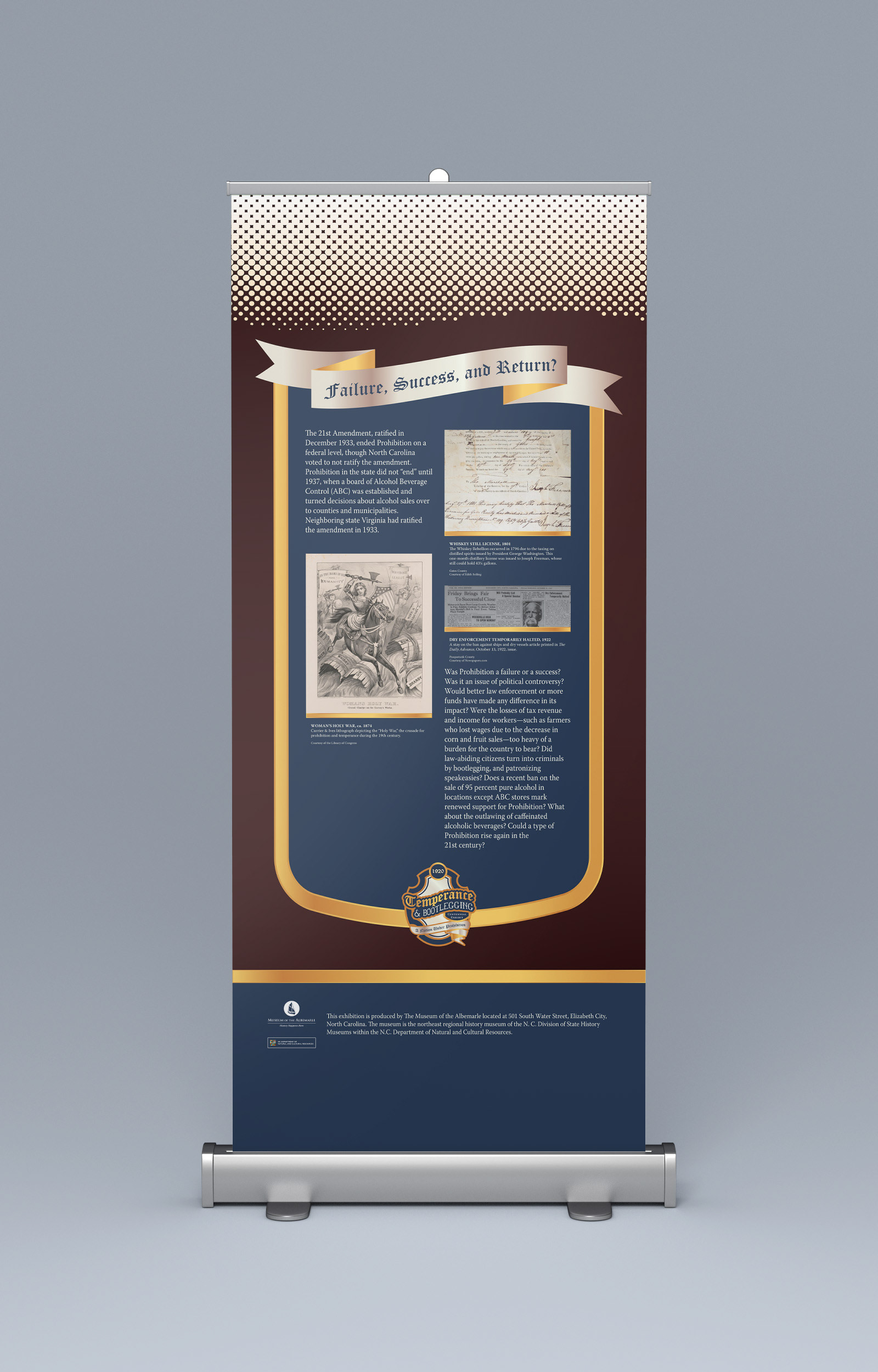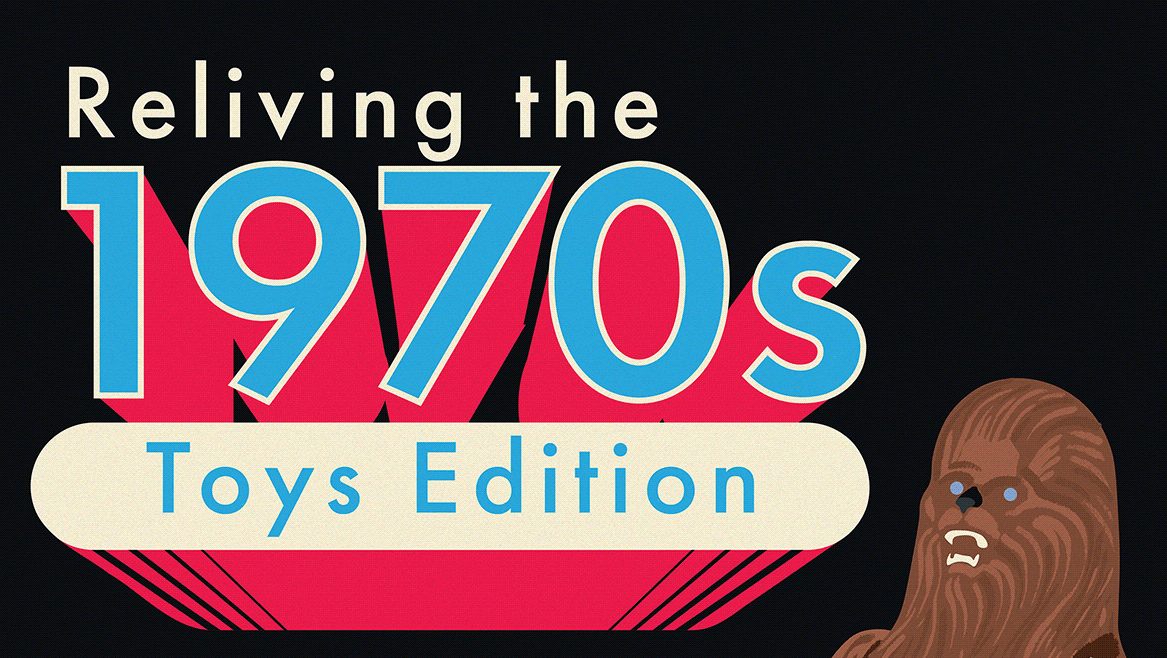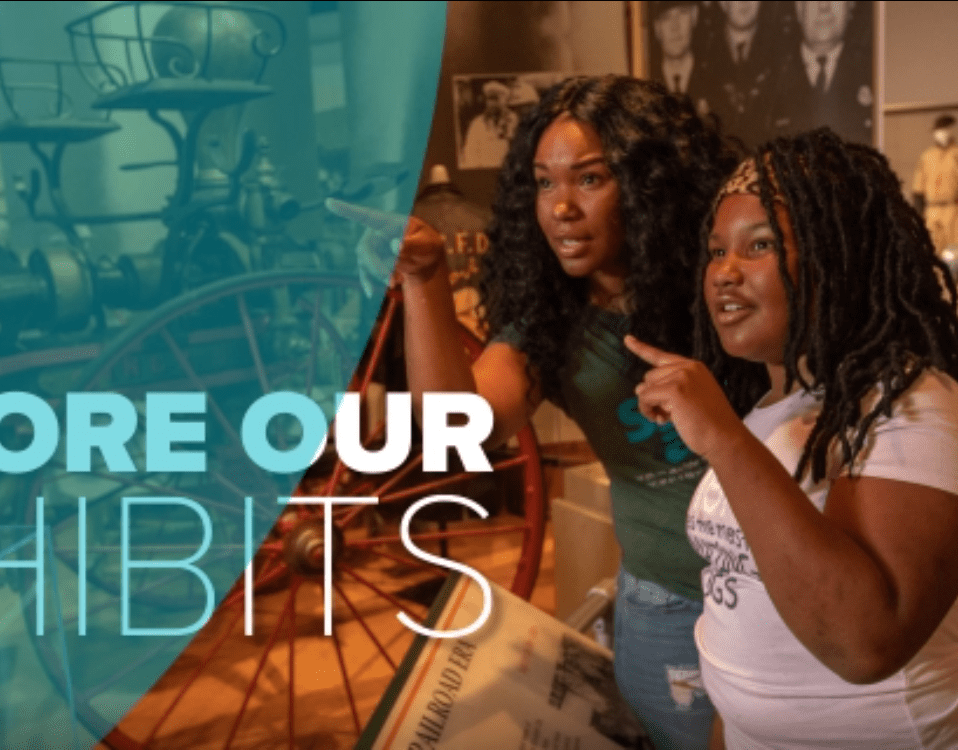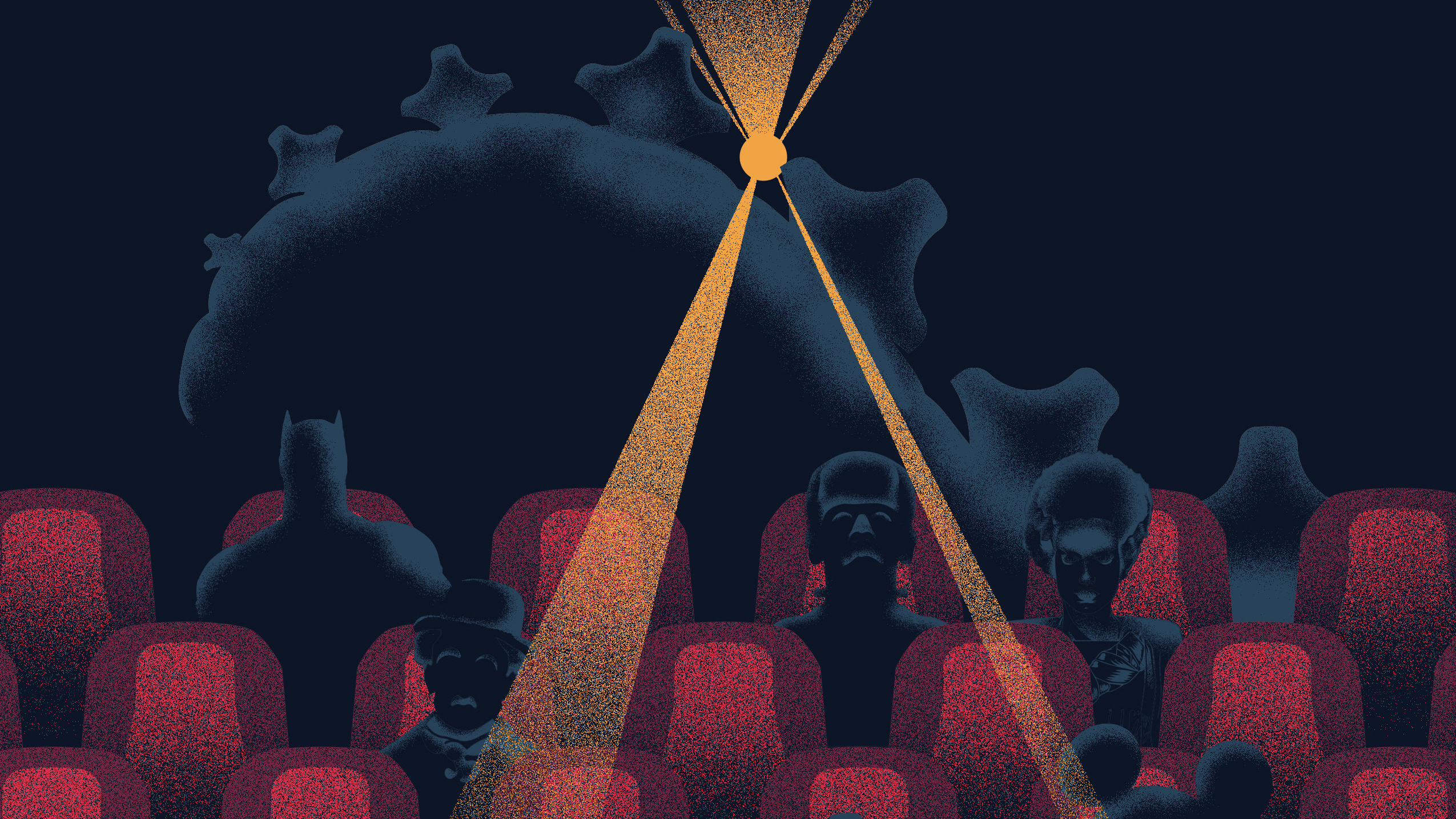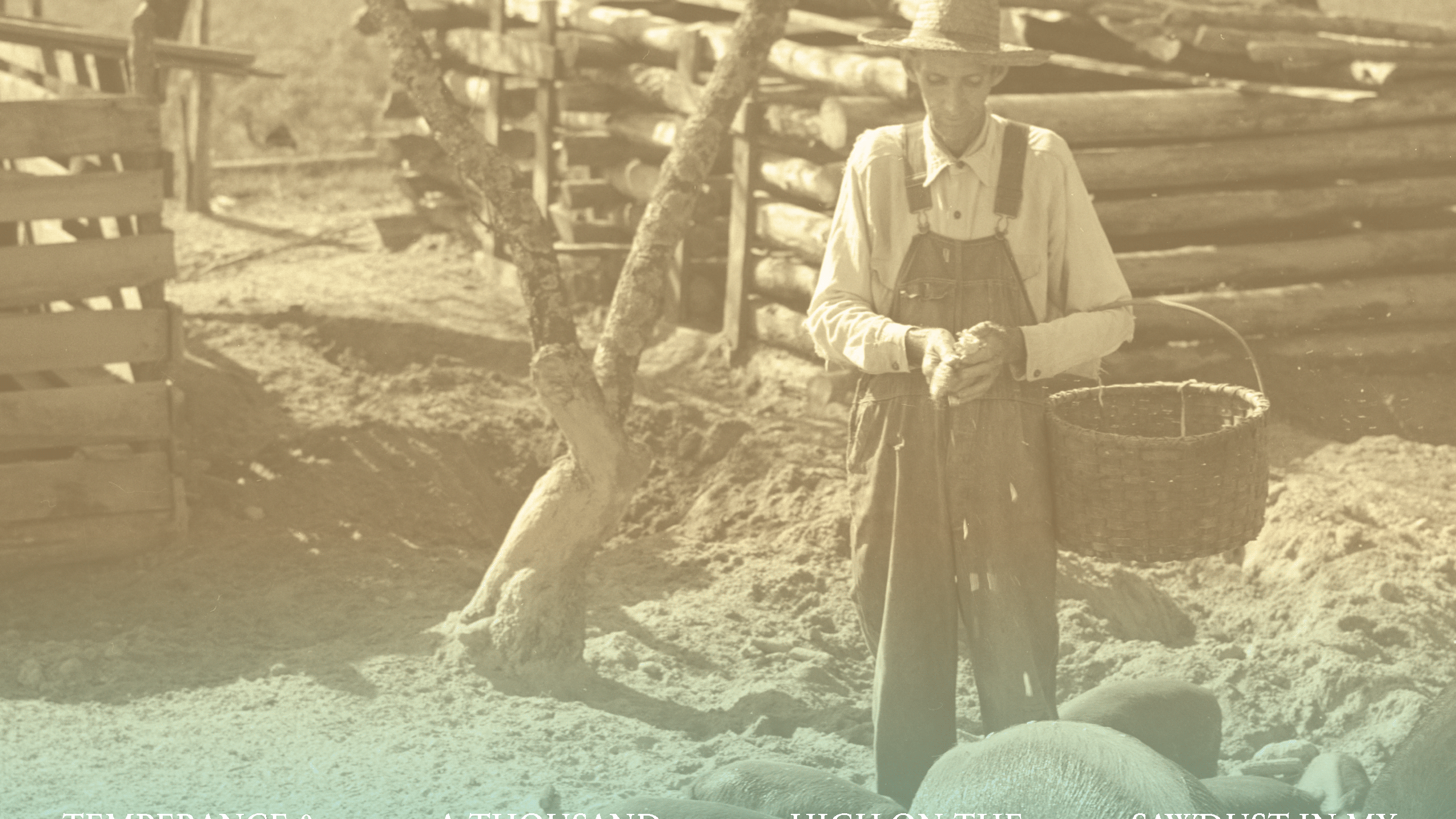Temperance & Bootlegging: A Nation Under Prohibition is a exhibit featuring informational panels discussing the federal law’s effects on northeastern North Carolina and artifacts including moonshine stills, a temperance medal, and wine and whiskey bottles. A 1957 black 210 Series Chevrolet will be highlighted for a few short months during the exhibit’s run.
The 18th Amendment to the Constitution banned production, sale, importation, exportation, and transportation of alcoholic beverages in the United States. Enforced by the Volstead Act in January 1920, this law had a lasting effect on rural areas such as northeastern North Carolina and southeastern Virginia.
Imagine that exactly at midnight, the whole country went “dry”! How did people react? Had the government taken away personal leisure? People’s lives were changing, as well as the nation.The 21st Amendment, ratified in December 1933, ended Prohibition on a federal level, though North Carolina voted to not ratify the amendment. Prohibition in the state did not “end” until 1937, when a board of Alcohol Beverage Control (ABC) was established and turned decisions about alcohol sales over to counties and municipalities. Neighboring state Virginia had ratified the amendment in 1933.
Was Prohibition a failure or a success? Was it an issue of political controversy? Would better law enforcement or more funds have made any difference in its impact? Were the losses of tax revenue and income for workers—such as farmers who lost wages due to the decrease in corn and fruit sales—too heavy of a burden for the country to bear? Did law-abiding citizens turn into criminals by bootlegging, and patronizing speakeasies? Does a recent ban on the sale of 95 percent pure alcohol in locations except ABC stores mark renewed support for Prohibition? What about the outlawing of caffeinated alcoholic beverages? Could a type of Prohibition rise again in the 21st century? Plan to visit and find out.
